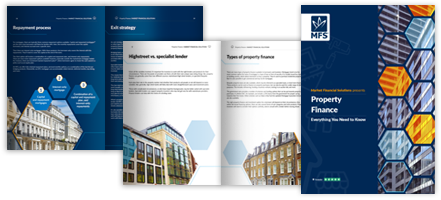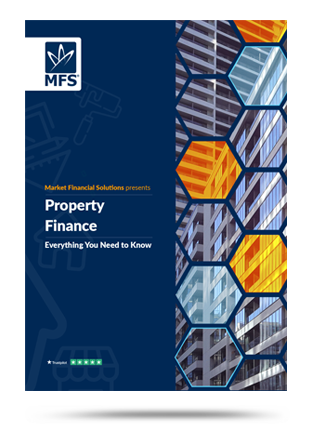Market Financial Solutions are a bridging loan and buy-to-let mortgage provider and are not legal, financial, investment or tax advisers. This document is for informational purposes only and does not, and should not be considered, to constitute legal, financial, investment or tax advice or be relied upon by any person to make a legal, financial, investment or tax decision. Therefore, Investors are encouraged to seek appropriate professional advice. The information in this content is correct at time of writing.

- Cash buyers
- Auction purchases
- Right to Buy
- Right to Acquire
- Shared ownership
- Build your own home
- Lifetime ISA
- Guarantor mortgages
- Shared mortgages (with partners)
- Joint Borrower Sole Proprietor (JBSP) mortgage (with parents)
- First Homes Scheme
- Security deposit mortgage
- Home Reach
- Gradual homeownership
- Affordable housing
- Specialist finance
- Alternative housing ideas
We all know how houses are bought. Typically, buyers apply for a mortgage from a lender, with the terms affected by deposit size, income levels, and the wider economy. Then there’s the cash buyers. Those with enough funds available to buy a property outright without the need for any debt-based products. But, there are different ways to buy a house out there, with some options likely falling under your radar. What’s particularly interesting about a number of these routes is that while they may not allow you to make a purchase, they could allow you to play a part in getting your loved ones onto the property ladder.
To refresh your memory, we’ve rounded up 17 different ways to buy a house in the UK, with a brief overview of the pros and cons for each. We recommend seeking professional advice before investing.
→ Learn everything you need to know about Property Finance in our Complete Guide.
1. Cash buyers
Some property investors may have access to vast levels of capital. These buyers may be able to purchase a property without any debt-based product at all. To be a cash buyer, you must have enough money at the ready to buy the property outright as you make the offer.
If you’re in a position to be a cash buyer, you may be able to benefit from several perks. You could leverage your liquidity to negotiate better terms. You’ll also likely have a speed advantage over your rivals.
But, you may face particularly rigid due diligence from the parties involved in the process. A lot of cash can raise fraud, and money laundering concerns. You’ll need to be prepared to have your paperwork combed over in fine detail.
2. Auction purchases
Auctions present a different way to buy a house, which embraces speed and tenacity. They provide opportunities for property investors keen to move quickly and find unappreciated assets. Property auctions continue to rise in popularity, with online auction demand ramping up in recent years due to the pandemic.
With “traditional” and “modern” auction methods available, homes of all shapes and sizes can be found across the nation’s auction houses. Often, properties put up for auction are in a debilitated state, or need to be offloaded by sellers quickly. As such, there’s sometimes bargains to be found.
What’s more, the bidding process tends to be transparent, fair, and reliable. Bidders will be able to see what their rivals are up to, negating the risk of gazumping. And once the gavel drops, contracts are signed, and everything gets wrapped up in mere weeks.
But, there is always the risk of being outbid. Also, auctions typically require a lot of preparation and due diligence ahead of the bidding. Winning bidders also may not be able to fully inspect their new property until after they’ve secured it. This may result in unexpected, and unwelcome problems emerging down the line.
3. Right to Buy
Right to Buy is a scheme that allows council house tenants to buy the houses they’re living in at a discount. The scheme’s peak years occurred in the 1980s, and it is no longer available in Wales or Scotland. It is still available to buyers in England and Northern Ireland, albeit under very limited circumstances.
The positives associated with Right to Buy mainly concern the wider societal impact. The scheme allowed many people on lower incomes to get on the housing ladder. And with how prices have risen over the decades, it elevated many families’ financial standing.
But, as social housing was bought up, we saw the construction of new affordable homes lag. A lack of supply contributed to skyrocketing prices. Many would-be buyers have been priced out of the market, creating many of the property wealth inequality problems we’re struggling against today.
4. Right to Acquire
The Right to Acquire scheme is an alternative way to buy a house for those who don’t qualify for Right to Buy. Right to Acquire works similarly to Right to Buy, but with less generous discounts. It allows eligible buyers to buy housing association homes at a discount of up to £16,000. For comparison, the biggest discount currently available for Right to Buy is £102,400 in England, or £136,400 in London.
While the eligibility criteria is similar to Right to Buy, the available options may be more restricted. To be eligible, your property must either:
- Have been built, or bought, by a housing association after March 31, 1997 or
- Have been transferred from a local council to a housing association after March 31, 1997
Details and guidance on both the Right to Buy and Right to Acquire schemes can be found on the government’s website.
6. Build your own home
While seemingly a farfetched idea, many people may elect to build their own homes in the face of skyrocketing costs. There are many options out there for those who want to take this route, including DIY or semi-DIY plans, kit homes, community collaboration projects, or custom-built homes.
Surprisingly, it may be cheaper to build your own home than it would be to buy an existing property. What’s more, there are many support measures available for self-builders. Such as the government’s Self Build Portal, and Help to Build scheme.
But, such an endeavour may be labour intensive way to buy a house. You’d need to find a suitable, available plot of land to build on. You’ll also likely need to attain a specific self-build mortgage to proceed. Before the building actually starts, contractors and the like will need to be consulted.
You may find yourself in something of a project manager position – overseeing budgeting, ordering materials, checking the legal side of things, adhering to health and safety rules and more. There could be many complications to juggle and overcome.
7. Lifetime ISA
The spiritual successor to the Help to Buy ISA, Lifetime ISAs (LISA) offer house buying support to savers aged between 18 and 40. Up to £4,000 a year can be saved into a LISA until you reach 50, with the government adding a 25% bonus to your savings, up to a maximum of £1,000 per year. This bonus can eventually be used to buy a first home, or fund your retirement.
While a LISA can help you get onto the housing ladder, there may be certain limitations involved. If you need to access the money in your LISA for unexpected costs or emergencies, you may be hit with a 25% penalty. There is also a cap on the value of the property you can invest in with a LISA – with a current maximum of £450,000.

8. Guarantor mortgages
A guarantor mortgage is for those who don’t have enough income to qualify for a mortgage on their own. The guarantor involved will provide a guarantee for the loan’s repayments where the borrower does not, or can not repay. A guarantor must be a close family member or have a close relationship with the borrower, be living in the UK, and have their income paid into a UK bank account.
Guarantors must get independent legal advice before they move ahead with this arrangement. For borrowers, having a guarantor can boost their chances of getting a mortgage. They may also be able to borrow more as the guarantor will provide lenders with added security and peace of mind.
But, this is an arrangement that can have serious detrimental effects on relationships where things don’t go to plan. The credit rating for both participants can be lowered where payments are missed. What’s more, often, guarantor mortgages can be more expensive than standard loans.
10. Joint Borrower Sole Proprietor (JBSP) mortgage (with parents)
A JBSP mortgage allows up to 4 people to buy a home together. Although, just one person will end up owning the home. These mortgages are often used by parents who want to get their children on the property ladder.
They present lenders with a less-riskier option, with all the borrowers involved sharing responsibility for the repayments. Typically, JBSP mortgages work similarly to standard residential mortgages. But, while these mortgages can help young family members, there are some potential downsides.
Eligibility will be dependant on all of the borrower’s credit. With as many as 4 people involved, the chances of being rejected may be higher. Some credit risk may also be applicable where payments are missed, and those on the mortgage application need to remember they wont’s have ownership, or control, over the home itself. Also, it may not be possible to use JBSP mortgages with certain housing schemes, while lenders may restrict who exactly lives in the property.
11. First Homes Scheme
The First Homes Scheme is different way to buy a house for first time buyers in England only. It allows eligible claimants to buy a home at a discount of between 30% and 50%. These homes can include new builds, or homes you buy from someone else who originally bought it as part of the same scheme.
To be eligible, you need to be at least 18, a first-time buyer, be able to get a mortgage for at least half the price of the home, and be buying the home as part of a household where the total income is no higher than £80,000 – or £90,000 in London.
While this scheme offers many cost-saving incentives, the limitations must be remembered. You will only be able to invest in new-builds in your area, and you must try to sell the property on to someone else using the First Homes Scheme down the line.
Competition is likely to be high, and new-builds are often sold at a premium. Meaning, the discount available might not be as generous as it first seems. Also, the home cannot cost more than £420,000 in London, or £250,000 elsewhere. This limits options further.
12. Security deposit mortgage
Security deposit mortgages work in a similar way to guarantor mortgages. With security deposit mortgages, a friend or family member only guarantees the deposit up to a set amount. They will not be liable for the whole mortgage. Currently, there are three types of security deposit mortgages available: collateral charge, linked savings deposits, and offset savings deposits.
Each offer people a chance to get on the property ladder more easily. But just as is the case with other mortgages that involve 3rd parties and family members, there are risks involved. Credit ratings could be affected, and there may be limited options on the high street.
13. Home Reach
The Home Reach scheme allows buyers to engage in a part buy, part rent option on new builds. It is similar to the Shared Ownership Scheme, it’s just not delivered through a housing association. It’s delivered through heylo, an organisation set up in 2014 to make housing more affordable for aspiring homeowners. Heylo operates in over 190 local authorities spread across England.
The Home Reach Scheme will allow you to buy up to 75% of a property initially, with a minimum deposit of 5%. Heylo will then become your landlord and grant you a lease on the property. Meaning, you’ll be able to live in the home as if you’ve bought it outright.
While the scheme can help people with limited assets to their name get on the property ladder, there are some limitations involved. There are income limitations of up to £90,000, and there may be rigid assessment criteria involved. What’s more, there are several fees involved on top of the rental costs. This includes reservation fees, lease management fees, and service fees.
14. Gradual home ownership
Another different way to buy a house is the gradual home ownership offered by Wayhome. It allows buyers to buy a home worth up to 10x their income. Through the scheme, you’ll pay for the part of the home you can afford, and Wayhome’s funding partners cover the rest. The house will be paid for in full, meaning you won’t need a mortgage at all.
Instead, you’ll pay rent on the part of the home you haven’t bought yet. Eventually, you’ll buy more of the home over time, reducing how much rent you’ll pay. This scheme also has limitations on they types of properties that can be bought. But, instead of new builds, participants will be able to purchase older buildings. Meaning, it may prove easier to sell the home on down the line.
A minimum deposit of 5% will be needed, along with a minimum household income of £24,000 before tax. Also, this scheme may be closed off to those with a poor credit history, who have consistently failed to pay rent, or who have a recent and unsettled bankruptcy. To be eligible, applicants must be aged between 21 and 55, be a British citizen, or have settled or pre-settled status, or have indefinite leave to remain in the UK, and have lived in the UK for the last 3 years. There may also be limitations on the self-employed, and those with a criminal record.
15. Affordable housing
Affordable housing broadly describes a range of schemes and practices used to build and offer cheaper homes for those who can’t afford market prices. They generally concern new-builds which can be found in various shared ownership, rent to buy, social rented housing schemes and more.
These efforts can be offered via a complicated mix of public authorities, developers, and private companies. With a lack of centralised definitions involved, it can be difficult to know exactly what’s available to you. But, where you do qualify, you can gain access to a range of affordable options.
The issue with affordable housing is the lack of it. We, as a country, have not been building enough homes to meet rising demand. Over the last 25 years, housing affordability has worsened in every local authority in England and Wales. This is especially true in London and the surrounding areas.
Also, if you do find suitable affordable housing, it may not be available to you as a buyer. In England, 59,175 affordable homes were delivered in 2021/22. Of these, 66% were for rent – including social, affordable, and intermediate rent.
But, it’s believed by many that we need at least 300,000 new homes per year to keep up with demand. If you’re looking to invest in affordable housing, you’re likely to face a lot of competition, coupled with limited options.
16. Specialist finance
Specialist finance, which includes bridging loans and bespoke BTL mortgages, can help property investors expand their portfolios. Bridging finance is used primarily by investors, as opposed to those who are buying a home to live in.
At Market Financial Solutions, our products are only available to investors who will not be living in the properties they’re buying. Typically, this includes landlords, property flippers, or commercial buyers.
Our products can support several property investment strategies. We can offer loans for those looking to expand their portfolios, spruce up or convert their existing assets, or get ahead at a property auction.
Specialist finance offers a more flexible, speedy solution for property investors than what may be available on the high street. Our funding can be tailored to your circumstances, and adapt to the wider market were needed.
17. Alternative housing ideas
All the aforementioned options primarily concern the standard housing types – houses, flats etc. But of course, there are alternative housing options out there for the adventurous types! Examples may include log houses, shipping-crate homes, houseboats, or even upscaled vans.
Each of these alternatives will present both pros and cons for buyers. They may be more affordable, and provide unique lifestyle options that can’t be found with a standard apartment or maisonette.
But, the uniqueness of these options may also present challenges. Some lenders may not be willing to lend on such different ways to buy a house or niche forms of housing. What’s more, it may prove difficult to sell to other buyers should you want to move on. There may not be much demand out there for tree-house homes, or earthships!
Regardless of the options you utilise, we’ll understand the challenges you’re facing. Since our founding in 2006, we have come across every kind of issue that can afflict property investors – concerning both new entrants and experienced pros alike.
We know how hard it can be to get on the ladder at all, especially in the current market. If you manage to secure an asset, but are unsure of your next steps, we may be able to help. If you want to discuss your options with a bespoke lender that looks for reasons to lend, we’re all ears.
The Complete Guide to
Property Finance
Everything you need to know
- Foundation & different finance types
- Useful tools
- Apply them in real life
- Market insights & more






